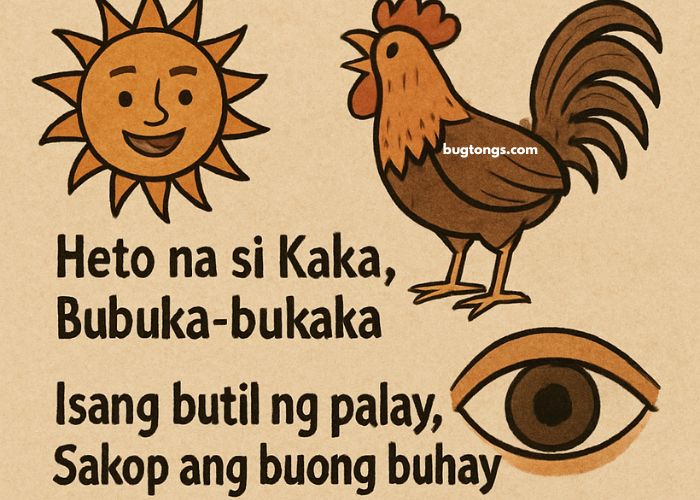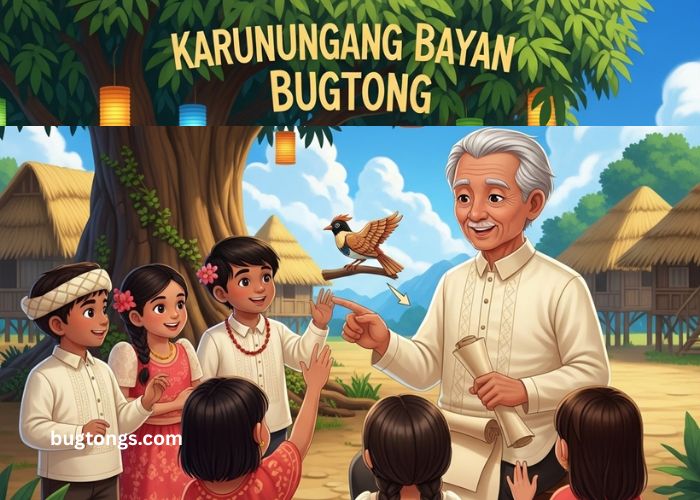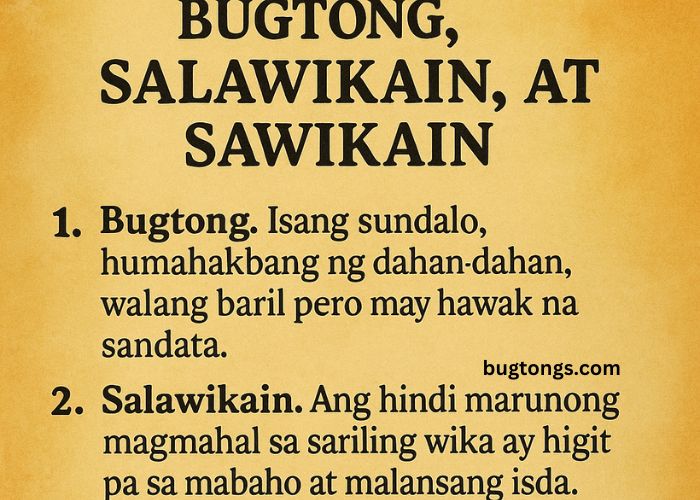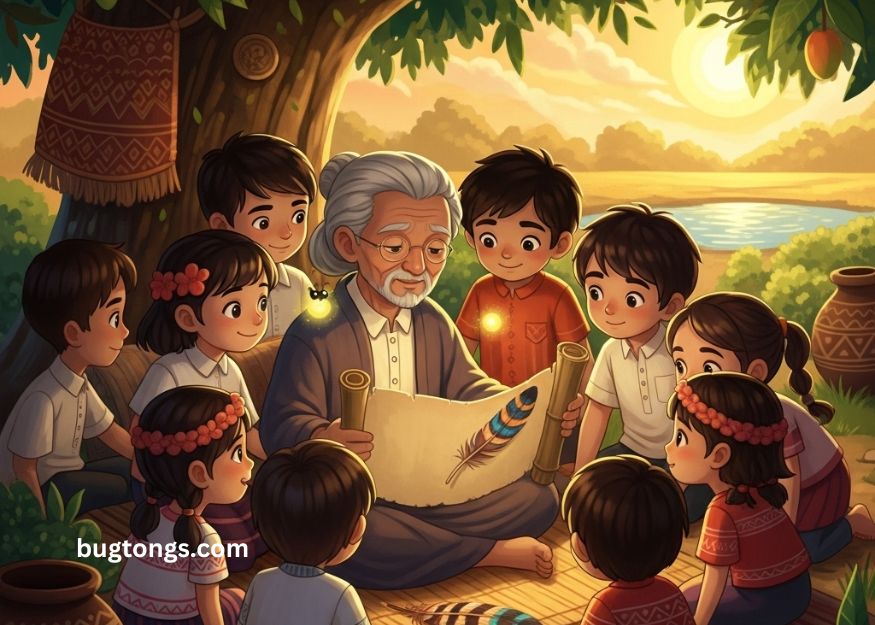Bugtong are one kind of riddle. Riddles are a fun game that can make us think. In the Philippines, people call riddles bugtong. These bugtong are part of the Philippines culture. A bugtong is a short and smart question. You try to guess the answer.
In this blog, we will learn tatlong halimbawa ng bugtong. This means three examples of riddles. Each bugtong has a funny clue and a smart answer. We will also explain why the answer is right. Let’s learn and have fun.
3 Key Points:
- Bugtong is a fun brain game.
- It helps you think smart.
- Bugtong is part of Filipino culture.
Tatlong Halimbawa Ng Bugtong
We will now look at tatlong halimbawa ng bugtong. Each one is short and has a clever answer.
1. Dalawang Batong Itim, Malayo Ang Narating
In English: Two black stones that go far.
Answer: Eyes
Why is this the answer?
We all have two eyes. Eyes are round and black. They look like stones. When we look far, our eyes see very far. That is why this riddle says the black stones go far. It is a smart way to talk about eyes.
2. Nakayuko Ang Reyna, Di Nalaglag Ang Korona
In English: The queen bends down, but her crown does not fall.
Answer: Guava (Bayabas)
Why is this the answer?
The guava is a fruit. It hangs on a tree. It bends, but the leaves on top (like a crown) do not fall. That is why we say the “queen” bends, but her “crown” stays. This bugtong is sweet and smart.
3. Baboy Ko Sa Pulo, Ang Balahibo’y Pako
In English: My pig on the island has nails for hair.
Answer: Jackfruit (Langka)
Why is this the answer?
The jackfruit is big. It has sharp skin. The skin looks like nails. That’s why the riddle says it has nails for hair. It is not a real pig. It is just a fun way to talk about jackfruit.
Why Bugtong Are Fun
People love tatlong halimbawa ng bugtong because they are fun and easy to play. Kids and adults like them. Here is why:
- Bugtong makes you smile.
- Bugtong helps you learn new words.
- Bugtong helps your brain grow.
Bugtong are part of Filipino life. They are in books, schools, and homes. You can ask your parents or grandparents. They know many old bugtong too.
Here is a small chart to help you remember:
| Bugtong (Filipino) | In Easy English | Answer |
| Dalawang batong itim… | Two black stones… | Eyes |
| Nakayuko ang reyna… | The queen bends, but crown stays on | Guava |
| Baboy ko sa pulo… | Pig with nails for hair | Jackfruit |
Where You Can Use Bugtong
You can use tatlong halimbawa ng bugtong at home, in school, or with friends. You can spend your time happily with your friends and family members. Here are some ideas:
In School
Teachers can play this game with their students. This game not only attracts their attention for the class, but also students can start thinking deeply. That can make them brilliant. Teachers can read a bugtong in class. Students guess the answer. It helps kids think better and have fun.
At Home
You can play with your family. Ask a bugtong, and they guess. It is a fun game. You can play it during dinner or playtime. Grandparents are playing this game with the kids of the family. By playing this game, they help to make a strong bond between family members.
With Friends
You can play this game with your friends at school. You can spend your time enjoying yourself. You can play bugtong at parties. The person with the most right answers wins a prize!
Here is another easy chart:
| Where to Use | How to Play Bugtong | Why It’s Good |
| In the classroom | The teacher reads, and the kids guess | Fun learning time |
| At home | Ask family, guess together | Family bonding |
| With friends | Make a fun contest | Makes playtime exciting |
More Bugtong To Try
If you like tatlong halimbawa ng bugtong, you will love more riddles! Here are three extra ones:
- Bugtong 1: Dalawang batong itim, malayo ang narating.
→ Two black stones go very far.
Answer: Mata (Eyes) - Bugtong 2: Nakayuko ang reyna, hindi natatanggal ang korona.
→ The queen bends, but her crown stays on.
Answer: Bayabas (Guava) - Bugtong 3: Baboy ko sa pulo, ang balahibo’y pako.
→ My pig on the island has nails for hair.
Answer: Langka (Jackfruit) - Bugtong 4: Maliit na bahay, puno ng patay.
→ Small house full of dead.
Answer: Posporo (Matchbox) - Bugtong 5: May bintana, walang bubong.
→ Has a window but no roof.
Answer: Mata (Eyes) - Bugtong 6: Isang prinsesa, punong-puno ng mata.
→ A princess full of eyes.
Answer: Pinya (Pineapple) - Bugtong 7: May leeg, walang ulo, may tiyan, walang dumi.
→ Has a neck, no head; has a belly, no waste.
Answer: Bote (Bottle) - Bugtong 8: Bumili ako ng alipin, mataas pa sa akin.
→ I bought a slave, taller than me.
Answer: Walis (Broom) - Bugtong 9: Kay lapad-lapad, hindi naman malapad.
→ It looks wide, but it’s not really wide.
Answer: Banig (Mat) - Bugtong 10: Hindi tao, hindi hayop, nagsusuot ng sumbrero.
→ Not a person, not an animal, wears a hat.
Answer: Kabute (Mushroom) - Bugtong 11: Bahay ng lola mo, iisa ang haligi.
→ Grandma’s house has one post.
Answer: Payong (Umbrella) - Bugtong 12: Munting hayop na pangahas, sa silid ay nagwawalis.
→ Small brave animal, cleans the room.
Answer: Walis Tambo (Soft Broom) - Bugtong 13: Isa ang ulo, walong paa.
→ One head, eight legs.
Answer: Payong (Umbrella) - Bugtong 14: Ulo’y saksi, katawan ay pakpak.
→ The head sees, the body has wings.
Answer: Salamin (Eyeglasses) - Bugtong 15: Dalawang magkaibigan, laging nag-uusap.
→ Two friends always talking.
Answer: Bibig (Lips) - Bugtong 16: Lumuluha walang mata, lumalakad walang paa.
→ It cries without eyes, it walks without feet.
Answer: Gripo (Faucet) - Bugtong 17: Binili mo nang buo, nang gamitin mo’y butas-butas.
→ You bought it whole, but it’s full of holes when used.
Answer: Salakot (Strainer/Net Hat) - Bugtong 18: Heto na si kaka, bubuka-bukaka.
→ Here comes kaka, opening legs wide.
Answer: Gunting (Scissors) - Bugtong 19: Isang tabo, laman ay pako.
→ A cup filled with nails.
Answer: Durian (Durian fruit) - Bugtong 20: Umuulan, walang ulap.
→ It’s raining, but there are no clouds.
Answer: Gripo (Faucet) - Bugtong 21: Di tao, di hayop, pero may ngipin.
→ Not a person, not an animal, but has teeth.
Answer: Sipilyo (Toothbrush) - Bugtong 22: Dalawang magkaibigan, laging magkadikit.
→ Two friends, always side by side.
Answer: Paa (Feet) - Bugtong 23: Isa ang bibig, walang tiyan.
→ One mouth, no stomach.
Answer: Bote (Bottle) - Bugtong 24: Araw-araw, nabubunot, pero hindi nalalagas.
→ Pulled daily, but not lost.
Answer: Ilaw (Light bulb) - Bugtong 25: Kung kailan mo pinatay, saka humaba ang buhay.
→ When you turn it off, it lives longer.
Answer: Kandila (Candle) - Bugtong 26: Hindi tao, hindi hayop, pero nagsasalita.
→ Not a person, not an animal, but talks.
Answer: Radyo (Radio) - Bugtong 27: May paa, walang kamay.
→ Has feet, no hands.
Answer: Mesa (Table) - Bugtong 28: Akyat dito, akyat doon, hindi naman lumalakad.
→ Goes up and down, but never walks.
Answer: Hagdan (Stairs) - Bugtong 29: May dila, walang bibig.
→ Has a tongue, but no mouth.
Answer: Sapatos (Shoe) - Bugtong 30: Bata pa si Neneng, marunong ng manahi.
→ Little Neneng already knows how to sew.
Answer: Karayom (Needle)
These are also famous bugtong in the Philippines. They help us learn new words and ideas.
Note: Bugtong helps kids use their brain every day.
Reminder: Bugtong is easy to play and fun to share.
Conclusion
We just learned tatlong halimbawa ng bugtong. These are three short and fun riddles in Filipino. We saw the questions, the answers, and why they are correct. Bugtong is great for learning and laughing.
You can share these bugtong with your family, your teacher, or your classmates. You can even make your own riddle. Let’s keep bugtong alive by sharing them.
FAQs
- What is “tatlong halimbawa ng bugtong”?
It means “three examples of riddles” in Filipino. - Are bugtong fun?
Yes! Bugtong are very fun and smart. - Who can play with bugtong?
Everyone! Kids and adults can play. - Can I make my own bugtong?
Yes! You can make riddles using easy words. - Are bugtong only in Filipino?
Most are in Filipino, but you can make your own bugtong in English. - Why do people love bugtong?
They are fun, smart, and part of our culture. - Where can I find bugtong?
In books, online, and from older people. - Is bugtong a game?
Yes! It’s a word game. - Can bugtong help me in school?
Yes! It helps you think and learn new words. - Are these riddles still used today?
Yes! Many people still love and share bugtong.




